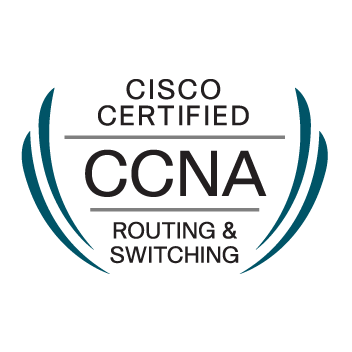- Cisco Community
- Technology and Support
- Networking
- Switching
- Re: What is a VRF? (for beginners)
- Subscribe to RSS Feed
- Mark Topic as New
- Mark Topic as Read
- Float this Topic for Current User
- Bookmark
- Subscribe
- Mute
- Printer Friendly Page
- Mark as New
- Bookmark
- Subscribe
- Mute
- Subscribe to RSS Feed
- Permalink
- Report Inappropriate Content
10-16-2019 08:50 AM
Can someone explain what is a VRF (for beginners)
Solved! Go to Solution.
- Labels:
-
Catalyst 6000
Accepted Solutions
- Mark as New
- Bookmark
- Subscribe
- Mute
- Subscribe to RSS Feed
- Permalink
- Report Inappropriate Content
10-16-2019 09:07 AM
Hi,
VRF (Virtual Routing and Forwarding) is a technology that allows having more than one routing table on a single router. The concept of VRFs on routers is similar to VLANs on switches. VRFs are typically used in combination with MPLS VPNs. VRFs without MPLS is called VRF lite.
I think read this article, You will get more: https://howdoesinternetwork.com/2016/vrf
Deepak Kumar,
Don't forget to vote and accept the solution if this comment will help you!
- Mark as New
- Bookmark
- Subscribe
- Mute
- Subscribe to RSS Feed
- Permalink
- Report Inappropriate Content
10-16-2019 09:07 AM
Hi,
VRF (Virtual Routing and Forwarding) is a technology that allows having more than one routing table on a single router. The concept of VRFs on routers is similar to VLANs on switches. VRFs are typically used in combination with MPLS VPNs. VRFs without MPLS is called VRF lite.
I think read this article, You will get more: https://howdoesinternetwork.com/2016/vrf
Deepak Kumar,
Don't forget to vote and accept the solution if this comment will help you!
- Mark as New
- Bookmark
- Subscribe
- Mute
- Subscribe to RSS Feed
- Permalink
- Report Inappropriate Content
10-17-2019 12:41 AM
- Mark as New
- Bookmark
- Subscribe
- Mute
- Subscribe to RSS Feed
- Permalink
- Report Inappropriate Content
10-07-2020 12:50 AM
Thanks, just the answer I needed
- Mark as New
- Bookmark
- Subscribe
- Mute
- Subscribe to RSS Feed
- Permalink
- Report Inappropriate Content
04-03-2022 01:40 AM
Thanks for the content, keep creating for beginners.
Appreciated
- Mark as New
- Bookmark
- Subscribe
- Mute
- Subscribe to RSS Feed
- Permalink
- Report Inappropriate Content
05-01-2024 06:33 AM - edited 05-01-2024 06:34 AM
In addition to that, it is mostly suitable for larger networks, for instance, service providers or larger enterprise networks.
- Mark as New
- Bookmark
- Subscribe
- Mute
- Subscribe to RSS Feed
- Permalink
- Report Inappropriate Content
05-01-2024 07:19 AM
"In addition to that, it is mostly suitable for larger networks . . ."
Unsure "suitable" would be best word choice as much would depend on network requirements rather than network size, I suspect.
For example, when I worked for Comcast supporting their Enterprise network, with about 5,000 network routers and switches supporting about 100,000 users, we didn't need nor use VRFs.
- Mark as New
- Bookmark
- Subscribe
- Mute
- Subscribe to RSS Feed
- Permalink
- Report Inappropriate Content
05-01-2024 12:00 PM
You are right, it’s dependent on requirements.
- Mark as New
- Bookmark
- Subscribe
- Mute
- Subscribe to RSS Feed
- Permalink
- Report Inappropriate Content
05-23-2024 09:05 AM
Thanks a lot!!
- Mark as New
- Bookmark
- Subscribe
- Mute
- Subscribe to RSS Feed
- Permalink
- Report Inappropriate Content
10-16-2019 07:41 PM
Check out this link, you'll also learn how to configure it:
- Mark as New
- Bookmark
- Subscribe
- Mute
- Subscribe to RSS Feed
- Permalink
- Report Inappropriate Content
05-08-2021 01:38 AM
Thank you so much.
- Mark as New
- Bookmark
- Subscribe
- Mute
- Subscribe to RSS Feed
- Permalink
- Report Inappropriate Content
07-16-2025 08:32 AM - edited 07-16-2025 10:34 AM
@lambertjohn is what you describe possible? I believe so.
Are VRFs commonly used as described, or should be? I don't believe so.
Could you provide any additional references that VRFs are commonly used similar to your description, and/or recommendations for using them as described?
The reason for my question, if, say, MovieBox and other streaming traffic were both on the Internet, as your receiving host, using multiple VRFs seems a rather complex solution to insure MovieBox is delivered buffer free.
If MovieBox is on the Internet while the other video streaming is on a private business network, certainly VRFs might be used, although having VRFs use different paths, somewhat, negates the advantages of hardware sharing.
What the latter approach would be like having two VLAN capable switches interconnected via multiple links and mapping VLANs to different links. It too can be done, but it gets complex, quickly, especially for failure situations.
Discover and save your favorite ideas. Come back to expert answers, step-by-step guides, recent topics, and more.
New here? Get started with these tips. How to use Community New member guide




